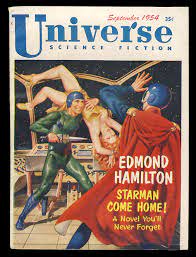CYBORGS [PART 7]
This would be the last but one post in the Cyborg series. If we have missed out any of the articles in the series, check it out here 👉 part 1, part 2, part 3, part 4, part 5 and part 6
The topic of this week is "CYBORGS IN EARLY LITERATURE"
The first book which included a citation of a Cyborg was "the man that was used up" , a short story [published in 1843] written by Edgar Allan Poe. The story line says - A soldier uses the technology to enhance his strength and intelligence to win over the opponent army. The hero of the story had broad chest, monstrous strength, keen eye sight, bright eyes - all those are essential for an ideal soldier.
A french writer in his book "Nyctalope on Mars" [published in 1911] has depicted hero as a Cyborg. The hero of the story has artificial heart and sharp eyes which were able to see things clearly in the dark. He had many bionic body parts which improvised his working skills and efficiency. The name "Nyctalope" came from a french word Nyctalope which means one with super vision. The most of the story runs in the night time.
An american science writer Edmond Hamilton has a created a superhero by name "Captain Future" in his works. In his book titled "the comet doom" , he describes how a team of astronauts including Captain Future have been attached with special equipment to make them powered for space exploration. Edmond is well known for his other literary works: "fugitive of the stars", "Last call for Doomsday", "Star man come home".
An american authoress Catherine Lucille Moore in her book "No Woman born " [published in 1944] has narrated how a woman transforms into a cyborg. This was the first book to narrate about a female Cyborg. This was published in a magazine by name by name "Astounding Science Fiction" . The story line goes like : A female artist died in a fire accident in a theater. Later, her brain was transplanted into an artificial body and she was revived. She could sing, dance and act in the same way as before. A year later, she achieved powers to hear more sounds and see more vision than normal humans and used the same to entertain people more.
In 1962, Edmond Hamilton published a book "After a judgement day" in which he introduced 'mechanical analogues" which resembles humans and called them Charles. He called them Cyborgs and also explained about the Cybernetics in detail. The Cyborgs he created had many powers. They inactivated the nuclear bombs and prevented the nuclear warfare.
These were some of the early literary works which included Cyborgs in them. Now a days, most of sci-fi comics, books etc talk about Cyborgs. This is what I needed to share this week.
Next week,"Cyborgs in movies"....subscribe to not miss out.









Ohhhh dude... Ua killin it...
ReplyDelete